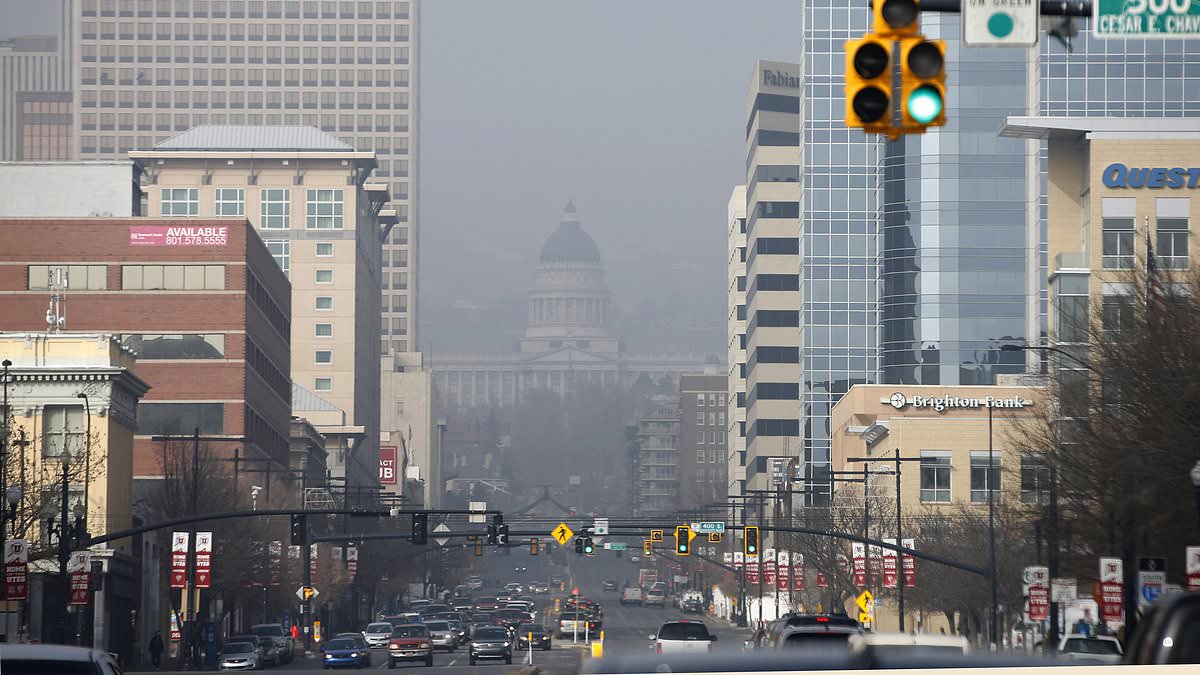Red state residents warned that toxic threat lurks in plain sight – why they should worry if a storm is brewing
By Editor,James Cirrone
Copyright dailymail

Residents of Utah, especially ones living around the Great Salt Lake, are acutely vulnerable to the harmful effects of dust pollution, a new study found.
Scientists were already well aware that Salt Lake City’s atypical geography lends itself to sudden, harsh changes in its air quality.
Periodic temperature inversions in the winter traps cold air underneath a layer of warm air, a process that is exacerbated by the mountain-valley topography. This essentially holds in pollution particles from cars and other sources right over the Salt Lake Valley.
However, researchers have discovered that these dust storms that routinely keep Utahns inside for days are more dangerous than previously thought.
Contaminants discovered in the dust analyzed in the GeoHealth journal study last month included arsenic, which can cause diabetes and many different types of cancer.
Arsenic, a naturally-occurring substance on earth, was scrubbed off mountains and rocks by streams and rivers over the course of thousands of years. That’s how it ended up in the Great Salt Lake playa and how it routinely ends up in dust.
Scientists also found lead, which can severely stunt development of the nervous system and brain, especially in children.
Lead mostly comes from human activities like mining. It also used to be added to gasoline all around the United States, a practice that was phased out by 1996 after regulators recognized that it was contributing to a major public health crisis.
A 2011 study estimated that this one decision adds $2.4 trillion a year to the world economy, largely because because higher IQs lead to higher lifetime earnings.
Some dust samples contained hazardous levels of thallium, a highly toxic element that can cause hair loss, gastrointestinal issues and premature birth if a mother ingests it.
Annie Putman, a hydrologist with the US Geological Survey and lead author of the GeoHealth study explained that these dangerous particles are ending up in dust storms largely because they’re swept up from the playa.
‘Because we’re in a closed basin,’ Putman told The Salt Lake Tribune, ‘much of what we do … has a chance to end up in the lake’.
Previous research from Putman indicates that these materials could be linked to a copper mine in Kennecott and a smelter in Salt Lake County.
She collected the samples by making dust filters using round cake pans with glass marbles suspended over plastic mesh. She then placed them at 17 sites in Davis, Weber, Box Elder and Cache counties.
‘This is kind of an old but very inexpensive methodology for pretty successfully capturing dust,’ Putman said.
‘It’s great because you don’t need electricity. You don’t need anything special. You just set the traps out, you wait, you come back.’
She gathered these samples in the late summer and fall of 2022, a particularly dry year that saw the lake sink to a record low elevation.
She then sent the samples to the University of Utah to analyze the isotopes contained in the dust.
Bountiful, a Salt Lake City suburb, had more dust pollution from human activities, like nearby gravel quarries. Towns to the north have higher exposure to emissions from the playa.
Some dust samples also contained hazardous levels of thallium, a highly toxic element that can cause hair loss, gastrointestinal issues and premature birth if a mother ingests it.
It’s not clear where the thallium is coming from, but Putman has some theories.
Putman posited in a 2023 report that the thallium may have come from the Ogden Defense Depot Superfund site, or from nearby hot springs.
‘It’s a thread we haven’t been able to pull yet,’ Putman said. ‘There’s potentially something interesting there.’
Children younger than six years old are most at risk, Putman’s most recent research found, because they tend to incidentally ingest higher amounts of dust and dirt relative to the size of their bodies.
‘I have a child who’s nine months old, so I’m thinking about this all the time,’ Putman said. ‘Babies… are constantly picking things up and exploring them with their mouths.’
Putman added that during the time she collected her samples, there were no major dust storms, which could indicate smaller particles are going unnoticed.
The Utah Department of Environmental Quality is in the midst of building a monitoring system to track dust across the state.
Putman’s study recommends washing your hands, along with toys and produce. It’s also good to remove your shoes indoors and use vacuums with HEPA filters.
‘It is important to do science that’s relevant to people,’ Putman said, ‘so that’s a major motivator for all of us who worked on this’.



